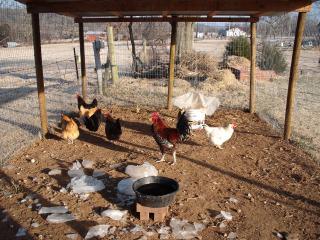My coop will have 43"x29" floor space. It will be 48" high. The nest box will be out side.
the roof will be 48x96 and the coop will be under this and screened.Is my inside big enough
for 2 isa browns to live the winter in.
the roof will be 48x96 and the coop will be under this and screened.Is my inside big enough
for 2 isa browns to live the winter in.








